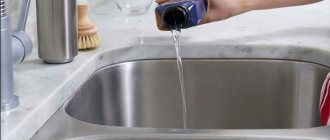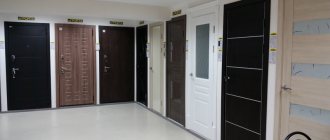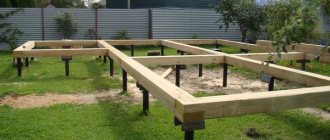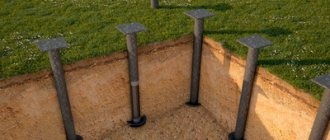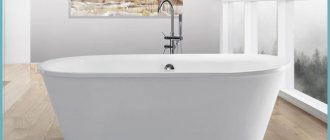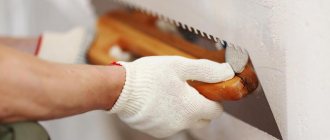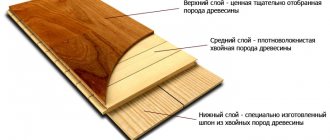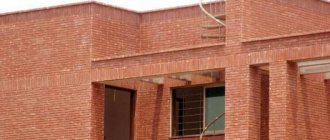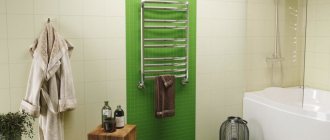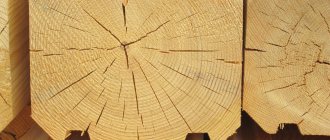The kitchen is the most visited place in the house. And it is important, even at the planning stage, to think about what this room will look like, including the materials used to make the main elements. Today, the most budget-friendly, functional and ergonomic option are plastic kitchen countertops, reviews of which are mostly positive. Let's consider the advantages and disadvantages of plastic directly for the kitchen, as well as the types and features of caring for this material.
What is a plastic tabletop?
The plastic tabletop is an economy class option. This material can be imitated to resemble marble, granite, wood, quartz, and the cost will be six times cheaper than artificial or natural stones.
The basis of tables with a plastic top for the kitchen is chipboard or MDF, which can be of different thicknesses. Chipboard material under high pressure (postforming method) is combined with a thin but durable layer of HPL plastic, which is a decorative option. At the same time, the edges are carefully bent over the edge, and a flat and smooth surface is obtained.
HPL plastic consists of several layers of kraft paper, which are pressed together under high pressure and impregnated with resins. Thus, the material is reliably protected from moisture, mechanical damage and burnout. The quality of the material depends on the manufacturing technology.
Advantages and disadvantages
The mineral is considered the hallmark of the Earth, since its crystals have not been found on any other planet. Using this amazing stone to create a work surface in the kitchen has a number of advantages:
- The rock is one of the most durable on the planet: it supports the entire earth’s crust. Granite is resistant to abrasion and easily tolerates contact with the cutting edges of kitchen knives and hatchets. The hardness of the rock is ensured by the presence of quartz. On the Mohs scale, the mineral received a fairly high rating of 7.
- The durability of the stone is confirmed by history itself. Fine-grained varieties remain intact for up to 500 years.
- Granite does not react to contact with hot surfaces. The material is resistant to high temperatures.
- The stone almost does not come into contact with food acids and alkaline surface cleaning agents. The countertop, made of granite, is moisture resistant.
- The material is hygienic and does not harbor pathogenic bacteria.
- A wide variety of colors and patterns allows you to choose a countertop option for the kitchen in any style.
- The brightness of the shades is maintained throughout the entire service life of the product. This parameter is not affected by ultraviolet radiation or mechanical damage.
Despite the many advantages of natural stone, it has several obvious disadvantages, including the following:
- High price. Granite is one of the elite materials that is chosen by respectable owners with a stable financial situation.
- The stone can absorb strong dyes that accidentally fall on the slab. However, it will be impossible to remove such a stain.
- When designing oblong and shaped surfaces, the formation of plate joints is inevitable. The longest cut is 3 m. The joints can be masked using decorative putty or chamfered.
- The tabletop is heavy, which is why the lower cabinets of the set require additional reinforcing structures.
pros
Plastic countertops for the kitchen, photos of which are presented above, have many advantages in addition to their low cost.
The advantages of a plastic kitchen are as follows:
- affordable price - for example, the cost of a domestically produced laminated board measuring 60 x 24.5 cm and 28 mm thick can be purchased for 1,500 rubles, 38 mm thick and 3 m long - 4,000 rubles;
- a variety of colors, textures and decors from classic style to trendy high-tech;
- high-quality material lasts a long time, does not fade and is not subject to mechanical stress;
- the material is not afraid of high temperatures (you can even place hot dishes on it), is easily cleaned of dirt and does not absorb moisture or odor;
- plastic is resistant to chemical treatment.
Additional advantages include the fact that any design or even a photograph can be printed on the plastic surface.
Price
Due to the strength of the rock, mining, cutting and processing procedures are quite expensive. The final price per linear meter of countertops is influenced by the following factors:
- The number of solid slabs that will be involved in the manufacture of the product. Remaining amounts are most often included in the price.
- The price of the rock, which depends on the place of extraction, the depth of the quarry and the rarity of the selected species.
- Method of processing end edges. The more complex the profile shape, the more expensive the order will be.
- Delivery of a heavy product including lifting to the floor.
A three-meter countertop with the simplest end and a thickness of 2 cm, which has standard holes for a sink, stove and mixer, can cost about 33 thousand rubles.
Minuses
Despite the obvious advantages of a plastic-coated countertop, the material also has disadvantages.
Disadvantages of using plastic in the kitchen:
- in appearance this material is inferior to stone and wood, it does not look so natural and organic;
- chipboard material is not durable; under constant exposure to water, the plastic can become deformed and swell;
- the weakest point of such tabletop material is the joints, which should be further processed or seals attached;
- plastic cannot be restored, unlike artificial stone, scratches on which can be easily polished (it is better to use cutting boards on such a surface).
Help when choosing granite countertops for the kitchen
Before placing an order for the manufacture of a product from this rock, it is useful to ask the supplier whether the product has a quality certificate. Some types of natural stone have increased radioactivity. In order for the use of granite to be safe for health, the level of specific activity of natural radionuclides (Aeff) should not exceed 370 Bq/kg - this is the first class of material. During the dialogue with the supplier’s representative, it is advisable to clarify what cleaning and masking agents can be used for this category of granite.
Types of plastic kitchen countertops
The plastic that is used for application to chipboard or MDF can be of two types: High Pressure Laminates (HPL) and Cotinuous Pressed Laminates (CPL). The first option is made under high pressure, during which several layers of paper are compressed; it is of higher quality and more durable. The second type of plastic is processed under low pressure, so its quality indicators are somewhat lower. When choosing, you should take into account the brand of plastic, which may affect the price of the finished product.
Also, plastic countertops can be of two types:
- from ready-made laminated boards of standard sizes of domestic or European production - the country of origin does not matter much here, since both Russian and foreign companies pay close attention to the quality of their products;
- A kitchen table with a plastic top can be made to order - this option will cost more, but you can choose the decor, finish, shade and other elements yourself.
Kinds
Thanks to modern technologies, granite sheets can be processed in different ways, and the final result will have the following different textures:
- Polishing products allows you to create a mirror surface that reveals a unique pattern on the slab. It’s easy to wash off dirt from such a countertop, but the gloss requires constant cleaning, as it looks untidy at the slightest carelessness.
- Polished granite has a matte finish. The surface does not have a mirror shine, and therefore the texture of the stone is less clearly expressed.
- The “leather-like” treatment has a pleasant-to-touch roughness that does not in any way affect the quality of the material. Minor defects in natural stone become invisible, and the pattern and structure of the mineral are fully revealed.
How to choose and install
The Russian market has a fairly wide range of plastic countertops, both domestic and foreign. There are standard sizes of 60 x 224 cm and 62 x 305 cm. If necessary, you can choose the size yourself, which can vary from 2 to 4 m with a thickness of 28-38 mm.
The most budget option is a wood-look plastic kitchen countertop made of CPL (low-pressure plastic) material. Despite the affordable price, the quality indicators are low. It is better to choose HPL plastic. Although it is visually impossible to distinguish one option from another, only a specialist can do this. When choosing, you should pay attention to this most important indicator.
Installing a plastic countertop is not difficult, but for high-quality installation it is better to contact a specialist who will adjust the dimensions to those required for a particular room. To adjust it to size, MDF or chipboard is sawn, but if chips or cracks have formed in place, they cannot be eliminated, so such work should be carried out with special care.
How to install a plastic tabletop yourself?
- All kitchen elements must be level and positioned strictly horizontally. To correct the level, you can use spacers, wedges or legs if they are provided by the manufacturer.
- Markings, which include protrusions on the walls, are applied with a pencil or marker. The gap between the wall should be no more than 5 cm.
- The slab is cut using a jigsaw or hacksaw. For ease of use, a guide bar is used. You can avoid chips and cracks when sawing by using masking tape, which is attached along the line where the cut will be made.
- The cut area is processed with a file. Thus, all irregularities are removed.
- The places of cuts and joints are treated with silicone sealant; if necessary, this is done using metal strips. The distance from the wall is covered with a plastic plinth for kitchen countertops, which is selected according to the color and design of the furniture.
Experts note that the service life of a plastic kitchen depends not only on the material of manufacture, but also on the quality of installation.
Plastic kitchen design
A plastic kitchen countertop (according to reviews) is the best option, since the range of products is so wide that you can choose the design at your own discretion. Facades made of this material easily fit into any style.
Types of kitchen design made of plastic:
- Modern style. A kitchen with curved and framed facades looks best. It is these non-standard shapes that can fit into a kitchen with an unusual layout. It is best to choose a plastic facade in a chameleon color. It changes color intensity depending on the lighting, the play of colors creates an unusual look for the room.
- Classic. In this design, it is better to give preference to natural materials or a plastic kitchen countertop with a wooden look. There should be no metal inserts or gloss. Curly handles (brass or bronze) will look impressive in such a visit.
- Modern. This style is not simple or cheap. It should combine clarity of form, harmony and grace. The best option would be corner plastic kitchens made of MDF and PVC film.
Features of operation
A plastic tabletop requires special care. Any dirt from its surface is removed with a damp cloth. You can use detergents, but without abrasive particles. You should refrain from using metal sponges or hard brushes, which can scratch the surface. When slicing, you should use a board to avoid scratches from the knife. When scratches occur, moisture penetrates the chipboard layer and causes it to deform or swell.
The weakest point of a plastic kitchen is the joints, which must be treated with sealant. Also important is the plinth, especially at the junction of the tabletop with the apron.
If you place a hot frying pan on a plastic surface, nothing will happen. But with prolonged thermal exposure, the tabletop can still become deformed. Therefore, it is better to use special hot mats.
Customer Reviews
A countertop made of artificial stone is still not a cheap purchase. Therefore, it is worth carefully studying the reviews of those who can already evaluate the quality of products from a particular manufacturer. For your convenience, we have collected several useful opinions from popular Internet forums.
Plastic countertop for the kitchen: reviews
A plastic kitchen is presented in reviews as a budget-friendly and quite successful option for the home. Users note not only its low cost, but also its convenience and ease of installation, and a fairly long service life with proper use. Its low sensitivity to mechanical damage and heat resistance were also noted. But still, users advise not to use the tabletop as a hot plate or cutting board, since if scratches form, the surface cannot be restored.
In general, reviews of plastic kitchen countertops are positive, but there are also negative reviews. Some users noted that the surface becomes deformed after a short time, and there are places where the tabletop has swollen. This is most likely due to improper operation, as well as the choice of the cheapest CPL brand plastic. It is an inexpensive, but also short-lived material. It is better to give preference to HPL.
